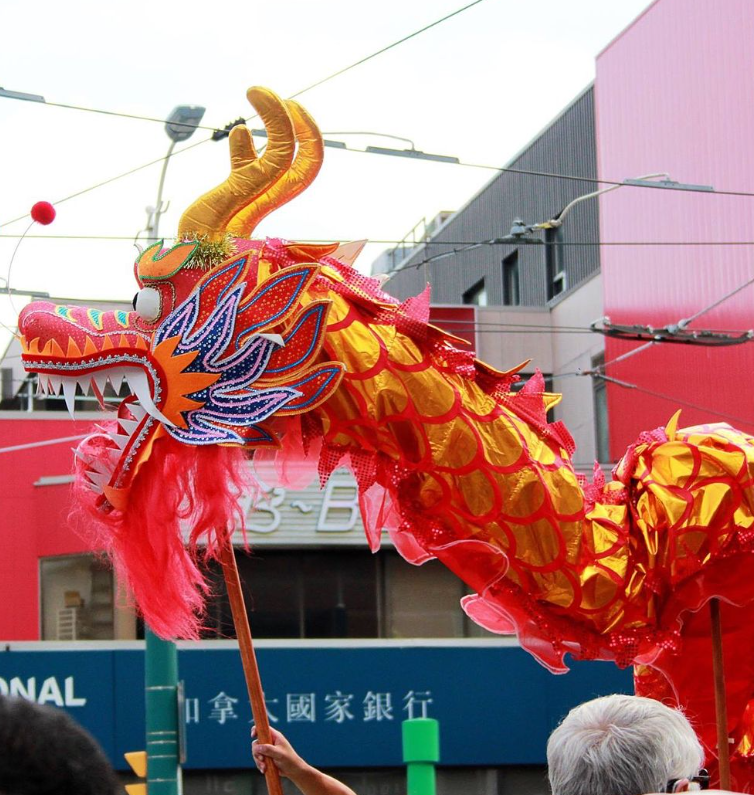Lion Dance
Drumming
Drumming in lion dance plays a very important role within the dance itself. The drum is the heartbeat of the universe, it is one of the very few instruments that can be found in all cultures around the world. The Lions job is to follow the drum as the drum uses faster or slower beats to emphasize moods. Faster drumming is more exciting. Slower drumming is more calm. however some styles of drumming known as “free styles” don’t control the lion directly. drummers can play their own tune as the lion dances but there are still some key things that require certain beats. for instance bowing is always a drum roll regardless of the style to show control and to let the lion know to dip its head down in respect. chewing/ eating are also a specific drum beat.
“D= Discipline
R= Respect
U= Unity
M= Music”
Movement
Each movement of a lion has its roots in Kung fu with strong stances and fluid footwork as well as fighting techniques, 3 star, 5 star, and 7 star are a series of lion dance steps. Each Kung fu school had their own lion dance to show the pride of their school. Back in older days if two lions were to meet from two rival schools (traditional etiquette)
1. the lions must stay low (no raising the head)
2. lions bow 3 times to each other.
3. Sifu’s shake hands wish each other wish each other well and continue on their own ways.
Any misunderstandings could potentially lead to clubs having to defend their honor. At this point the clubs would try to best each other, which could result in a loss of face or respect earned.
Now a days clubs no longer fight for honor. Most clubs see the lion dance as a sport or a welcoming gesture. students from other schools in most cases are welcomed to dance with the host club as a sign of friendship.
colourS OF THE LIONS
Chinese opera, can utilize lions to represent famous heroes of chinese history such as:
White fur/multi-coloured is older, wise and playful (Lau Bei)
Black fur/grey, green is the young fighting lion used for challenging or defending your club in the old days (Zhang Fei)
Black fur/red is the Guang Gung lion, the leader of lions.
types
The 2 popular types of lion are the northern and southern lions.
The more common lions seen performing at events are the southern style. Northern style lions are still being practiced though not as common. There are a few differences between the two example: The southern lion utilizes firm stances, sharp, precise head movements and is searching for the Lucky Lettuce (representing long life/ Greenery) which has a red envelope (lai see) attached which represents good luck. Traditionally the southern lion is accompanied by a happy buddha who at times leads the lions as well can spot the lions when preforming acrobatics and helps clear the way of pedestrians. The southern lion also utilizes a pyramid formation (one standing on ones shoulders) to clench and eat a higher hanging lettuce.
Statues of guardian lions have traditionally stood in front of imperial palaces, imperial tombs, archways, government offices, temples, and peoples homes. They are believed to have powerful, positive, and protective benefits, there are always 2 one male with a ball and a female with a cub.
The northern lion is very playful, utilizes acrobatics (jumping/ leaping) and traditionally chases an energy ball or ball of wisdom.
The Hakka Mo Kei-lin unicorn dance is special to the Hakka people
The international style of modern lion dance that we see jumping on the poles (Moi Fa Jongs) is the foundation of southern style lion, a southern style costume that has a shorter tail, which allows the tail person to maintain a grip on the head person’s sash/waist to allow better mobility for leaping or jumping. It is a mix of southern lion together with the playful and acrobatics (jumping/leaping) of the northern style lion.
The practitioners/performers of the Hok Jong / Fut Jong (pole jumping lions) lion dance system are very committed and dedicated to their sport, the international style of lion dance is a connection of culture and sport.
Long Tails
Traditional Long Tails in the old days were anywhere from 9ft - 16ft in length. The tails were designed to allow for more mobility of the lion head person, so he could utilize various kung fu skills and techniques. The longer length allows more slack so when in pyramid formation the lion head person could stand on multilevel of shoulders or multileveled tables being able to reach a higher hanging lettuce. The tail person could also utilize the longer length to battle and wave away the smoke from fire crackers, usually thrown at the lion’s feet by the store owner. (at that time the tail was usually played by a younger or smaller person) The traditional long tails in Canadian cold -30*C winters could also help keep the tail person warm as well as help balance walking through the snow.
Buddha
The Buddha traditionally has multiple jobs from leading the lions to crowd control and comic relief as well as spotting the lions during climbing exercises.
Dragon Dance
“The Dragon is known as the Guardian”
















